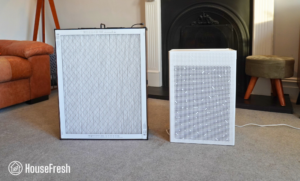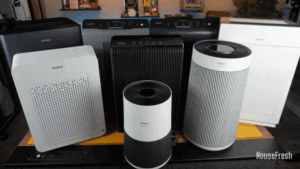When we first wrote this post, the World Health Organization didn’t accept that the COVID-19 virus was airborne, though they did recommend ventilation in healthcare facilities.
As we enter the summer of 2023, the WHO has finally announced that COVID-19 is actually airborne.
At this point, the U.S. CDC added the following guidelines to American schools about using ventilation to reduce the spread of COVID-19.
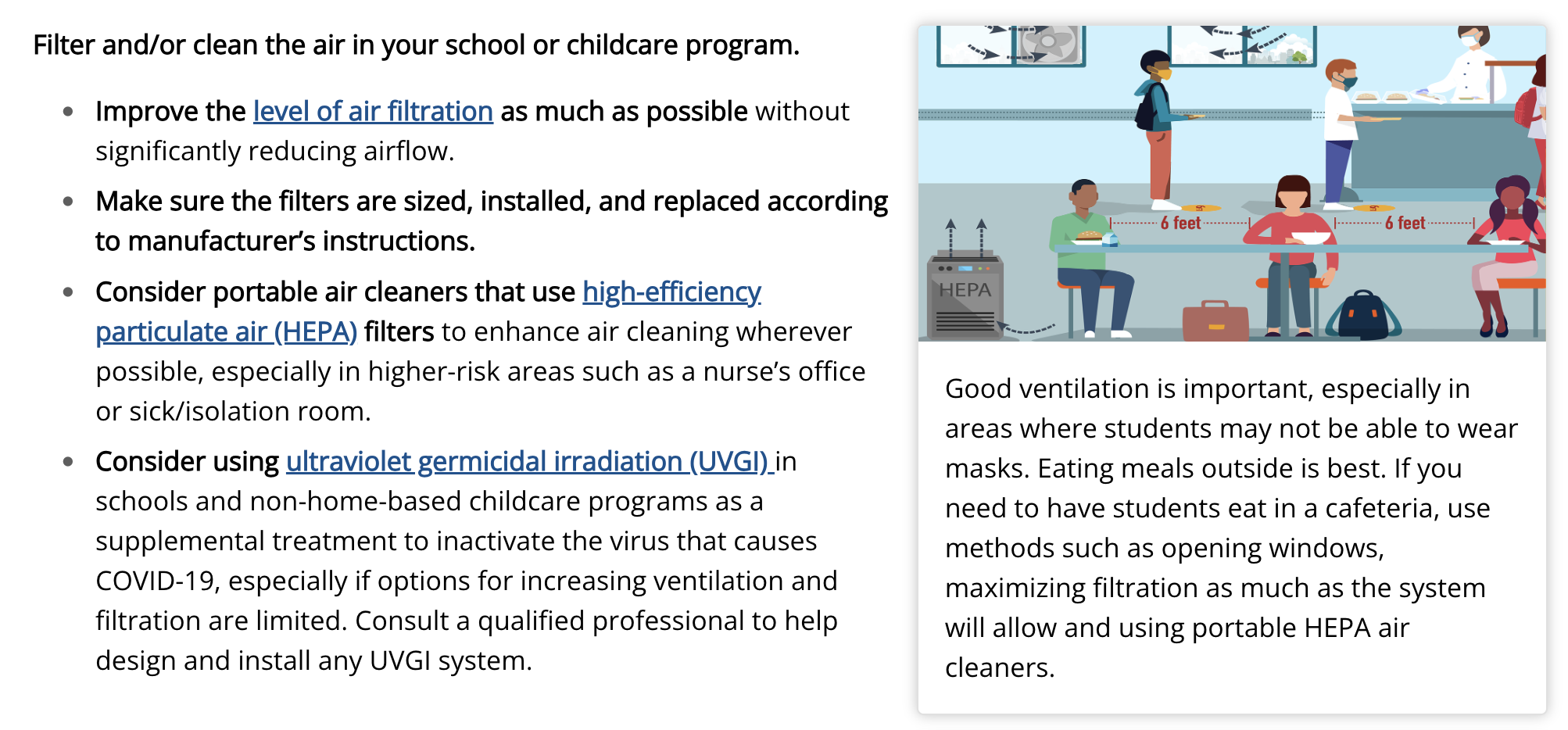
I always recommend checking the latest CDC advice — things change quickly as more research data is reviewed:
Dr Richard Corsi (Dean of Maseeh College of Engineering) recommends that all classrooms should get HEPA air purifiers with a CADR rating of 250-300 CFM. Most of us don’t live in classrooms, yet it would be safe to play on the side of caution by getting a similar spec model for home use.
This doesn’t mean purchasing an air purifier will replace Coronavirus prevention methods such as social distancing, mask usage and hand-washing — these have all shown to be very important to beating an epidemic like COVID-19.
After being involved with air purifiers for the past ten years, I know the biggest hurdle for many people is the number of choices available. It doesn’t help that some air purifier manufacturers try to mislead customers with different technologies.
We have a policy of never accepting freebies from companies, so we purchase every air purifier with our own money. This allows us to be honest with our findings without being biased by our relationship with the manufacturers.
On top of this, we also test each air purifier we review in our own controlled environment, so we can compare units side-by-side based on our own data instead of just regurgitating marketing materials and Amazon listings.
If you don’t want to read our full article, check out our top three choices below:
| 👑 BEST OVERALL | 💰 FOR TIGHT BUDGETS | 🛋️ FOR LARGE SPACES | |
|---|---|---|---|
| Levoit Core 600S | Levoit Core 300 | Smart Air Blast Mini | |
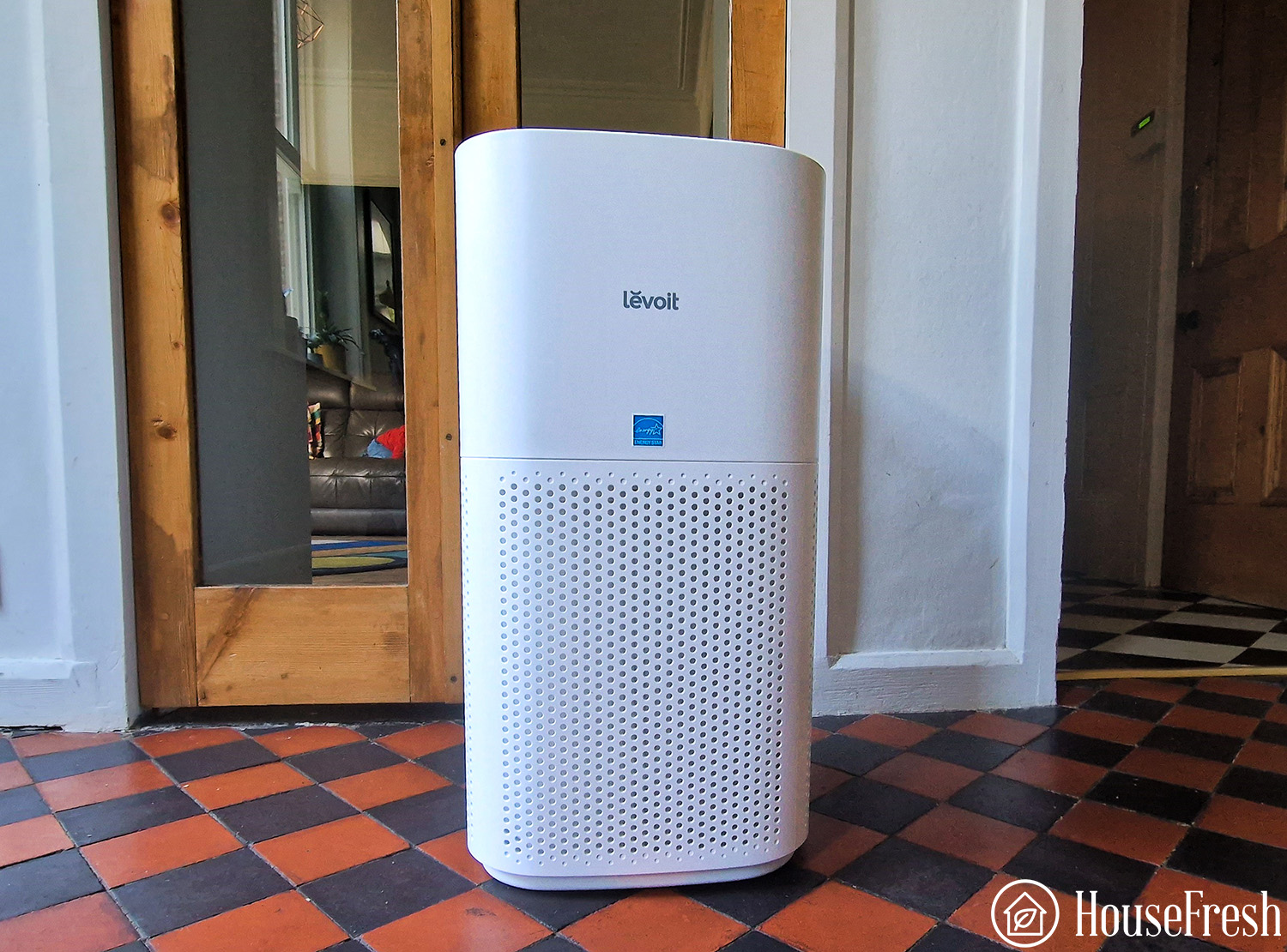 | 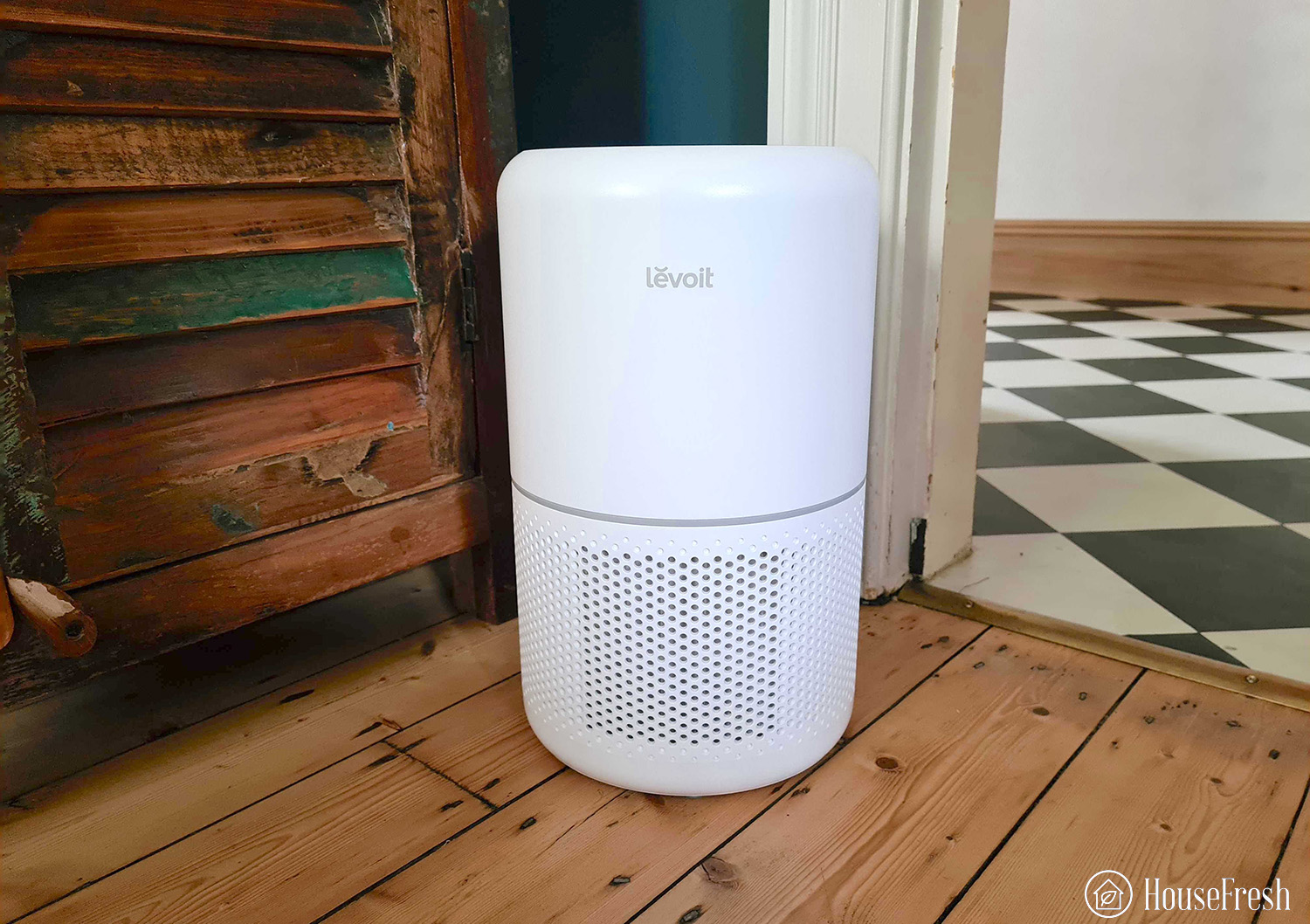 |  | |
| AIR CLEANING SPEED ⚡ | 15 minutes | 40 minutes | 17 minutes |
| CADR 👩🔬 | 410 CFM (697 m³/h) | 145 CFM (246 m3/h) | 435 CFM (740 m³/h) |
| FILTER TECHNOLOGY 💨 | 3-Stage Filtration | 3-Stage Filtration | H13 HEPA Filter |
| MAX ROOM SIZE 📏 | 635 sq. ft. | 219 sq. ft. | 915 sq. ft. |
| WEIGHT ⚖️ | 13.7 lbs (6.2 kg) | 7.48 lbs (3.4 kg) | 59 lbs (26.8 kg) |
| OUR REVIEW 🔍 | Core 600S review | Core 300 review | Blast Mini review |
| PRICE 💵 | $299.99 | $99.99 | Price not available |
Last update on 2025-07-03 / Affiliate links / Images from Amazon Product Advertising API
1. Best overall: Levoit Core 600S
With a CADR of 410 CFM, this air purifier is capable of cleaning the air in large rooms as it provides 5 air changes per hour in a room of 635 sq. ft. The CADR matched real-world performance; when we tested this in our home lab, it was the second fastest unit ever, cleaning our room in 15 minutes — just two minutes behind the Levoit EverestAir.
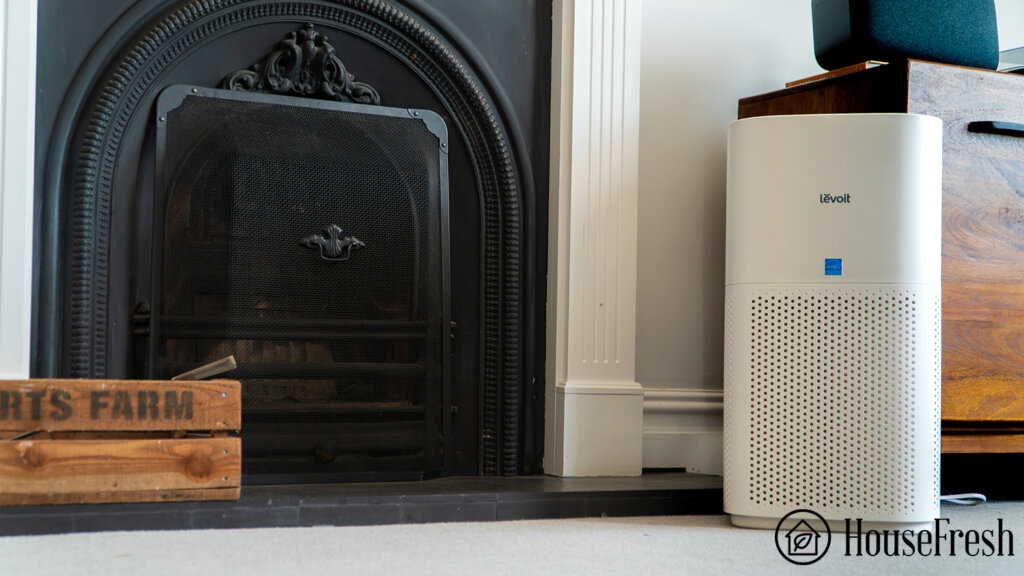
The price has one of the best ratios of $ to cleaning performance outside of DIY approaches. It also comes with App support and auto-mode and has a screen showing the air quality level at the top of the device.
The only downside to this unit is that it’s large and the design does not stand out compared with units like Dyson and Alen, which look much better. But for those looking to keep a large room as COVID-19 secure as possible, you should take a good look at the Levoit Core 600S.
What we really like
What we think could be better
| HouseFresh rating: | ★★★★★ |
| Time to clean our 728 cubic feet test room (with the device running at top speed): | – 16 minutes (top speed) – 32 minutes (sub-45 dBA speed) |
| Air purifier technology: | Pre-filter, particle filter for airborne particles and activated carbon filter. |
| Recommended room size (5 air changes per hour): | 559.5 sq. ft. |
| Clean air delivery rate (CADR): | Dust: 373 CFM Smoke: 377 CFM Pollen: 437 CFM |
| Dimensions (in inches / in cm): | 12.3 x 12.3 x 23.6 inches (31.3 x 31.3 x 60 cm) |
| Weight (in pounds / in kg): | 13.7 lbs (6.2 kg) |
| Filter life: | 6 months |
| Noise level in decibels (measured from 3 ft. away with a sound level meter): | Speed 1: 40.9 dB Speed 2: 45.9 dB Speed 3: 61.4 dB |
| Electricity consumption in watts (recorded with an electricity usage monitor): | Standby mode: 1.53 watts Speed 1: 7.92 watts Speed 2: 11.35 watts Speed 3: 21.15 watts Speed 4: 49.27 watts |
| Estimated running cost (electricity consumption + official filter replacement): | $174.71 per year |
| Manufacturer’s warranty: | 2 years |
| Country of manufacture: | China |
2. Best for large spaces: Smart Air Blast Mini
This large air purifier from Smart Air has a CADR of 435 CFM. It runs at a maximum of 49dB which is just less than moderate rainfall, so it’s perfect for classrooms or offices with people working intensely.
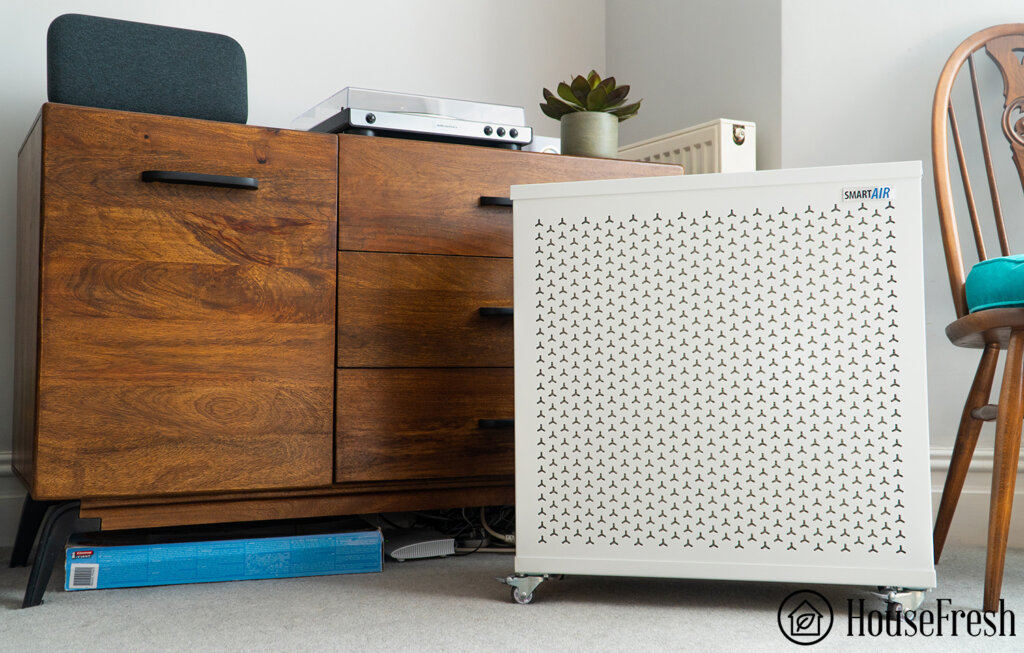
It has no smart features or app support; all your money goes into the large fan and filter. This unit will likely be overkill for something like a bedroom. But its HEPA H13 filters are excellent for reducing the risk of COVID-19 infection in large spaces that want to.
It’s even larger than the Levoit Core 600S and a significant investment. But filter costs are very fair, with the main HEPA only needing replacing every two years — just under $70 of filter costs per year.
What we really like
What we think could be better
| HouseFresh rating: | ★★★★★ |
| Time to clean our 728 cubic feet test room (with the device running at top speed): | 15 minutes |
| Air purifier technology: | H13 HEPA filter (and optional activated carbon filter) |
| Recommended room size (4.8 air changes per hour): | 703 sq. ft. |
| Clean air delivery rate (estimated CADR): | 435 CFM |
| Dimensions (in inches / in cm): | 22.6L x 13W x 24.8H inches (57.5L × 33W × 63H cm) |
| Weight (in pounds / in kg): | 59 lbs (26.8 kg) |
| Filter life: | 13 months |
| Noise level in decibels (measured from 3 ft. away with a sound level meter): | Speed 1: 44.9 dB Speed 2: 51.2 dB Speed 3: 56.3 dB |
| Electricity consumption in watts (recorded with an electricity usage monitor): | Standby mode: 0 watts Speed 1: 51.9 watts Speed 2: 87.4 watts Speed 3: 122.7 watts |
| Estimated running cost (electricity consumption + official filter replacement): | $285.29 per year |
| Cost per CADR cfm (based on dust CFM as reported by AHAM): | $1.38 |
| Manufacturer’s warranty: | 1 year |
| Country of manufacture: | China |
3. Best budget option: Levoit Core 300
If your max budget is $100 then the Levoit Core 300 is the best air purifier you can get. This is the simple version of the latest Levoit flagship, the Core 300S. You get a CADR of 145 CFM for less than $100 in exchange for no-auto mode or app support.

It can only keep a smaller room safe from C-19. I recommend only to use the Core 300 in rooms up to 219 sq. ft. as it cannot clean the air many times an hour. I would still always recommend paying a little more and getting the Core 400S or Core 600S unit, but if $100 is your maximum budget, then the Levoit Core 300 is the unit we recommend.
What we really like
What we think could be better
| HouseFresh rating: | ★★★★☆ |
| Time to clean our 728 cubic feet test room (with the device running at top speed): | 54 minutes |
| Air purifier technology: | Pre-filter, non-HEPA grade particle filter and activated carbon pellets |
| Recommended room size (4.8 air changes per hour): | 219 sq. ft. |
| Clean air delivery rate (CADR): | Dust: 134 CFM Smoke: 126 CFM Pollen: 154 CFM |
| Dimensions (in inches / in cm): | 8.7L x 8.7W x 14.2H inches (22L x 22W x 36H cm) |
| Weight (in pounds / in kg): | 7.48 lbs (3.39 kg) |
| Filter life: | 6 months |
| Noise level in decibels (measured from 3 ft. away with a sound level meter): | Speed 1: 38.9 dB Speed 2: 45.7 dB Speed 3: 50.2 dB |
| Electricity consumption in watts (recorded with an electricity usage monitor): | Standby mode: 0.1 watts Speed 1: 19.7 watts Speed 2: 24 watts Speed 3: 35.5 watts |
| Estimated running costs (electricity consumption + OEM filter replacements): | $109.14 per year |
| Cost per CADR cfm (based on dust CFM as reported by AHAM): | $0.63 |
| Manufacturer’s warranty: | 2 years |
| Country of manufacture: | China |
Comparing our top picks for COVID-19: Noise levels
We tested the sound levels for each of the air purifiers on our list at both the lowest and highest fan speed and used Flourish to visualize this data:
The Levoit Core 300 is the quietest unit on this list on average.
Comparing our top picks for COVID-19: Air cleaning speed
As we test all our air purifiers in the same room, we compare different models and brands by looking at how long they took to reduce the PM1 level to zero:
The Levoit Core 600S was the fasted unit, clearing our test room in 15 minutes.
What to look for when buying an air purifier for COVID-19
The EPA states that air purifiers can help reduce airborne contaminants including viruses in a building or small space. Scroll down to see more scientific sources that agree, including consultant scientist Bharti Sharma, who helps us break it down.
The way that the virus spreads makes it especially hard to tackle.
It is emitted from infected persons through tiny droplets, which attach to particulate matter and remain in the air for several hours depending on factors like ambient humidity, ventilation, wind rates and the amount of particulate matter pollution in the air.
I think we can all agree that it’s better to minimize the risk if possible.
When choosing an air purifier, it’s essential to keep the main goal of your purchase in mind. Dr. Corsi keeps it simple:

“No need to purchase gimmicky add-ons that sometimes do little and sometimes emit ozone.
HEPA is fine.”
— Richard Corsi, PhD, PE
Don’t be swayed by new virus-killing technology. HEPA has been shown to be very capable of removing COVID-19 particles. HEPA is backed up by decades of research.
Most new technologies like ionizers, PECO, UV, PCO, etc. are sold as doing something new but, in most cases, perform very poorly. They also have the potential to make the air worse as they can lead to harmful byproducts created when they interact with other chemicals in the air.
Whatever air purifier you pick, run it with the windows open, as increasing ventilation is another way of reducing the risk of COVID-19 transmission.
Common questions about COVID-19 and air purifiers
With the sheer amount of COVID-19 research published, we asked consultant scientist Bharti Sharma who has published several academic COVID-19 papers published, to help us understand the latest research when it comes to COVID-19 and air quality:
Using a fan within an enclosed space during COVID-19 infection can increase the transmission of the infection, particularly if there is no ventilation. Portable and ceiling fans just circulates the air inside a room, but it does not exchange, purify or replace the air.
📚 SOURCES: WHO, 2021; Chen et al, 2022; Pandey, Saha and Banerjee, 2023; EPA, 2023.
A limited number of research studies have shown that HEPA filters can remove viruses in droplet form in the air as the size of the airborne droplets is big and permits the HEPA filters to remove them.
📚 SOURCES: EPA, 2023; van der Vossen et al, 2023.
Yes, they have shown high efficiency in capturing the COVID-19 virus and research studies. High-efficiency particulate air (HEPA) filters or air purifiers are universally used in medical institution wards for filtering the air.
📚 SOURCES: Rodríguez et al, 2021; van der Vossen et al, 2023; Ueki et al, 2022.
The CDC recommends ventilation through portable or built-in high-efficiency particulate air (HEPA) filtration systems for filtering air in higher-risk areas like medical institutions or areas used by individuals suffering from COVID-19 infection or other viral infections.
📚 SOURCES: CDC, 2023; Lindsley et al, 2021; Ueki et al, 2022.
Using ventilation within public buildings, like hospitals, malls, office complexes, schools, libraries, eateries, cruise ships and elevators, can minimize airborne transmission of COVID-19 indoors together with isolation, social distancing and strict hand hygiene.
📚 SOURCES: Morawska et al, 2020; Nair et al, 2022; Fernández de Mera et al, 2022.
The sampling of air samples from hospital rooms in several research studies has proven that, yes, it is possible to detect SARS-CoV-2 PCR-positive particles of sizes >4 μm and 1–4 μm from air samples.
📚 SOURCES: Linde et al, 2023; Moharir et al, 2022; Nadzirah et al, 2023 ; Chia et al, 2020.
There is still debate about the efficiency of using CO2 monitors as a proxy to determine the risk of COVID-10 transmission in an area or a room. Some studies have published mathematical models for using CO2 as a proxy.
Many scholars and researchers argue that the use of CO2 as a proxy for the risk has many caveats in terms of the association between CO2 and respiratory aerosols. CO2 has a longer lifetime in the air compared to infectious respiratory aerosols, and by strict definition, a proxy does not require to be exactly related to the variable of interest.
📚 SOURCES: Park and Song, 2023; Iwamura and Tsutsumi, 2023.
Wrapping up
If your budget is limited, then go for the Levoit Core 300. If your space is big, then you’ll be better off with the Levoit Core 600S, one of the top performing units at removing particulate matter in the air from our home test lab.
For large spaces that you need to work next to, the Smart Blast Mini is perfect as it has a maximum sound level of 49dB.
But remember, ventilation, social distancing and strict hand hygiene are also all essential in the fight against the virus.
SOURCES
- Ali, S. A., Pathak, D., & Mandal, S. (2023). A review of current knowledge on airborne transmission of covid-19 and their relationship with environment. International Journal of Pharma Professional’s Research (IJPPR), 14(1), 1-5.
- Baraniuk, C. (2022). Airborne transmission: are CO2 monitors a long term solution or “pandemic hack?”. bmj.com
- Centers for Disease Control and Prevention. (2023). Ventilation in Buildings. cdc.gov
- Chen, Y., Lei, J., Li, J., Zhang, Z., Yu, Z., & Du, C. (2022). Design characteristics on the indoor and outdoor air environments of the COVID-19 emergency hospital. Journal of Building Engineering, 45, 103246.
- Chia, P. Y., Coleman, K. K., et al. (2020). Detection of air and surface contamination by SARS-CoV-2 in hospital rooms of infected patients. Nature communications, 11(1), 2800.
- Collivignarelli, M. C., Bellazzi, S., Caccamo, F. M., & Carnevale Miino, M. (2023). Discussion about the latest findings on the possible relation between air particulate matter and COVID-19. International Journal of Environmental Research and Public Health, 20(6), 5132.
- Dao, H. T., & Kim, K. S. (2022). Behavior of cough droplets emitted from Covid-19 patient in hospital isolation room with different ventilation configurations. Department of Chemical Engineering, Kangwon National University
- Environmental Protection Agency. (2023). Indoor Air in Homes and Coronavirus (COVID-19). epa.gov
- Environmental Protection Agency. (2023). Air Cleaners, HVAC Filters, and Coronavirus (COVID-19). epa.gov
- Fernández de Mera, I. G., Granda, C., et al (2022). HEPA filters of portable air cleaners as a tool for the surveillance of SARS‐CoV‐2. Indoor air, 32(9), e13109.
- Karami, S., Lakzian, E., Shabani, S., Dykas, S., Salmani, F., Lee, B. J.,. & Ahmadi, G et al. (2023). Selecting the Safe Area and Finding Proper Ventilation in the Spread of the COVID-19 Virus. Energies, 16(4), 1672.
- Iwamura, N., & Tsutsumi, K. (2023). SARS-CoV-2 airborne infection probability estimated by using indoor carbon dioxide. Environmental Science and Pollution Research, 1-14.
- Linde, K. J., Wouters, I. M., et al. (2023). Detection of SARS-CoV-2 in air and on surfaces in rooms of infected nursing home residents. Annals of Work Exposures and Health, 67(1), 129-140.
- Lindsley, W. G., Derk, et al (2021). Efficacy of portable air cleaners and masking for reducing indoor exposure to simulated exhaled SARS-CoV-2 aerosols—United States, 2021. Morbidity and mortality weekly report, 70(27), 972.
- Moghadam, T. T., Morales, C. O., Zambrano, M. L., & O’Sullivan, D. T. J. (2023). Energy efficient ventilation and indoor air quality in the context of COVID-19-A systematic review. Renewable and Sustainable Energy Reviews, 113356.
- Moharir, S. C., Thota, S. C., et al. (2022). Detection of SARS-CoV-2 in the air in Indian hospitals and houses of COVID-19 patients. Journal of Aerosol Science, 164, 106002.
- Morawska, L., Tang, J. W., et al. (2020). How can airborne transmission of COVID-19 indoors be minimized? Environment international, 142, 105832.
- Nair, A. N., Anand, P., et al. (2022). A review of strategies and their effectiveness in reducing indoor airborne transmission and improving indoor air quality. Environmental Research, 213, 113579.
- Nadzirah, S., Mohamad Zin, N., et al. (2023). Detection of SARS-CoV-2 in Environment: Current Surveillance and Effective Data Management of COVID-19. Critical Reviews in Analytical Chemistry, 1-12.
- Pandey, B., Saha, S. K., & Banerjee, R. (2023). Effect of ceiling fan in mitigating exposure to airborne pathogens and COVID-19. Indoor and Built Environment, 1420326X231154011.
ment, 785, 147300. - Ueki, H., Ujie, M., et al (2022). Effectiveness of HEPA Filters at Removing Infectious SARS-CoV-2 from the Air. Msphere, 7(4), e00086-22.
- van der Vossen, J. M., Kreikamp, et al. (2023). Establishment and application of test methodology demonstrating the functionality of air purification systems in reducing virus-loaded aerosol in indoor air. Journal of Hospital Infection, 135, 74-80.
- World Health Organization. (2021). Coronavirus disease (COVID-19): Ventilation and air conditioning. who.int



